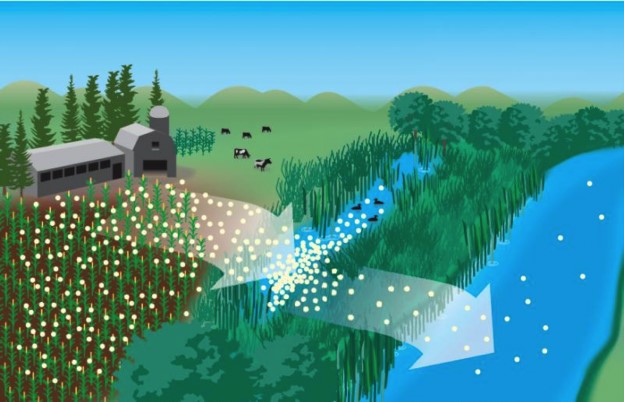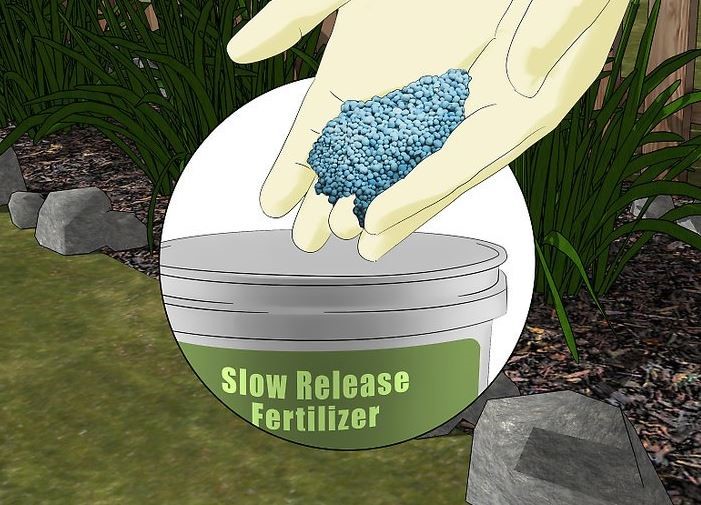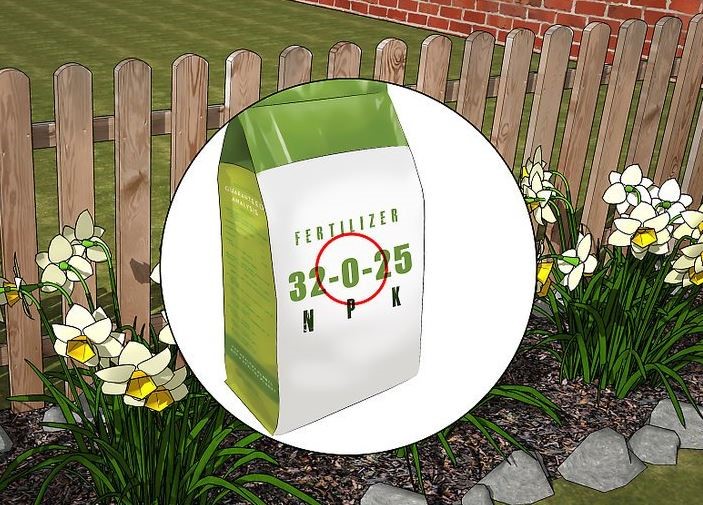 No matter where we live, we need to be aware that when we use fertilizers, nutrients such as nitrogen and phosphorus that are essential to plant growth can escape into our waterways - becoming toxic to plants, people and wildlife.
No matter where we live, we need to be aware that when we use fertilizers, nutrients such as nitrogen and phosphorus that are essential to plant growth can escape into our waterways - becoming toxic to plants, people and wildlife.
The Office of Facility Management’s Facility Services Division (AMP-100) strives to inform and educate Aeronautical Center employees of environmental best practices at work and in their personal lives. During summer months, more people are doing yard work and landscaping. Here are some best management practices when using fertilizer from the City of Moore’s Environmental Services Office.
Fertilizer isn’t a problem if it’s used carefully. If you use too much fertilizer or apply it at the wrong time, it can easily wash off your lawn or garden into storm drains and then flow untreated into lakes or streams. Just like in your garden, fertilizer in lakes and streams makes plants grow. In water bodies, extra fertilizer can mean extra algae and aquatic plant growth. Too much algae makes boating, fishing, and swimming unpleasant. Also, as algae begins to decay, it uses up oxygen in the water that fish and other wildlife need. Here are some basic DO’s and DON’Ts when using fertilizer at home:
DO:
- Look for the ZERO! Before buying, check the fertilizer bag for a set of three numbers showing the percentage of nitrogen, phosphorus, and potassium. Buy a bag with a "0" in the middle.
- What should you see at the store? Retailers that sell fertilizer must display phosphorus-containing fertilizer separately from phosphorus-free fertilizers and post a sign near the display.
- Test your soil! If you think your lawn might need extra phosphorus, test your soil first. The Oklahoma County OSU Extension can provide soil testing. To test your soil, you will need to dig down at least 6" and take 12 to 15 different samples. Mix this together in a clean bucket or pail and bring two cups of the soil to the Extension office at 930 N. Portland in Oklahoma City. The cost for each sample is $10 and the results will be mailed to you in approximately two weeks.
DON’T:
- Use lawn fertilizer that contains phosphorus unless you are establishing a new lawn, or a soil test shows that your lawn does not have enough phosphorus.
- Apply any fertilizer between December 1st through April 1st.
- If fertilizer spills onto these sidewalks, driveways or other impervious surfaces, you MUST sweep it up to prevent it from washing into drains and waterways. Do NOT hose it off.
- Apply lawn fertilizer within 20 feet of any water body unless…
- There is at least a 10 foot buffer of shrubs, trees, or other plants between the area you are fertilizing and the water; OR
- You are using a device with a spreader guard, deflector shield, or drop spreader. With such a device, fertilizer can be applied up to 3 feet from the water.
 Using slow release fertilizer is a viable option, as it is less likely to leach, doesn’t require as much water and retains nutrients for a longer period of time.
Using slow release fertilizer is a viable option, as it is less likely to leach, doesn’t require as much water and retains nutrients for a longer period of time.
 The numbers on a fertilizer bag form what is called the fertilizer’s N-P-K ratio, the proportion of three plant nutrients; nitrogen (N), phosphorus (P), and potassium (K). When too much phosphorus is applied to the lawn or is applied at the wrong time – it can be washed away, ending up in our water resources.
The numbers on a fertilizer bag form what is called the fertilizer’s N-P-K ratio, the proportion of three plant nutrients; nitrogen (N), phosphorus (P), and potassium (K). When too much phosphorus is applied to the lawn or is applied at the wrong time – it can be washed away, ending up in our water resources.
Prior to fertilizing, it is important to have your soil tested. This helps protect the environment from contamination by runoff or leaching of excess fertilizers, aids in the diagnosis of plant culture problems and helps to improve the nutritional balance of growing plants. Every lawn is different, and different grasses demand different nutrients; nourishment that simple watering may not provide. Do your homework to learn which fertilizer is best for your lawn, but be mindful of the environment and compliance in protecting our groundwater, lakes, rivers and atmosphere.